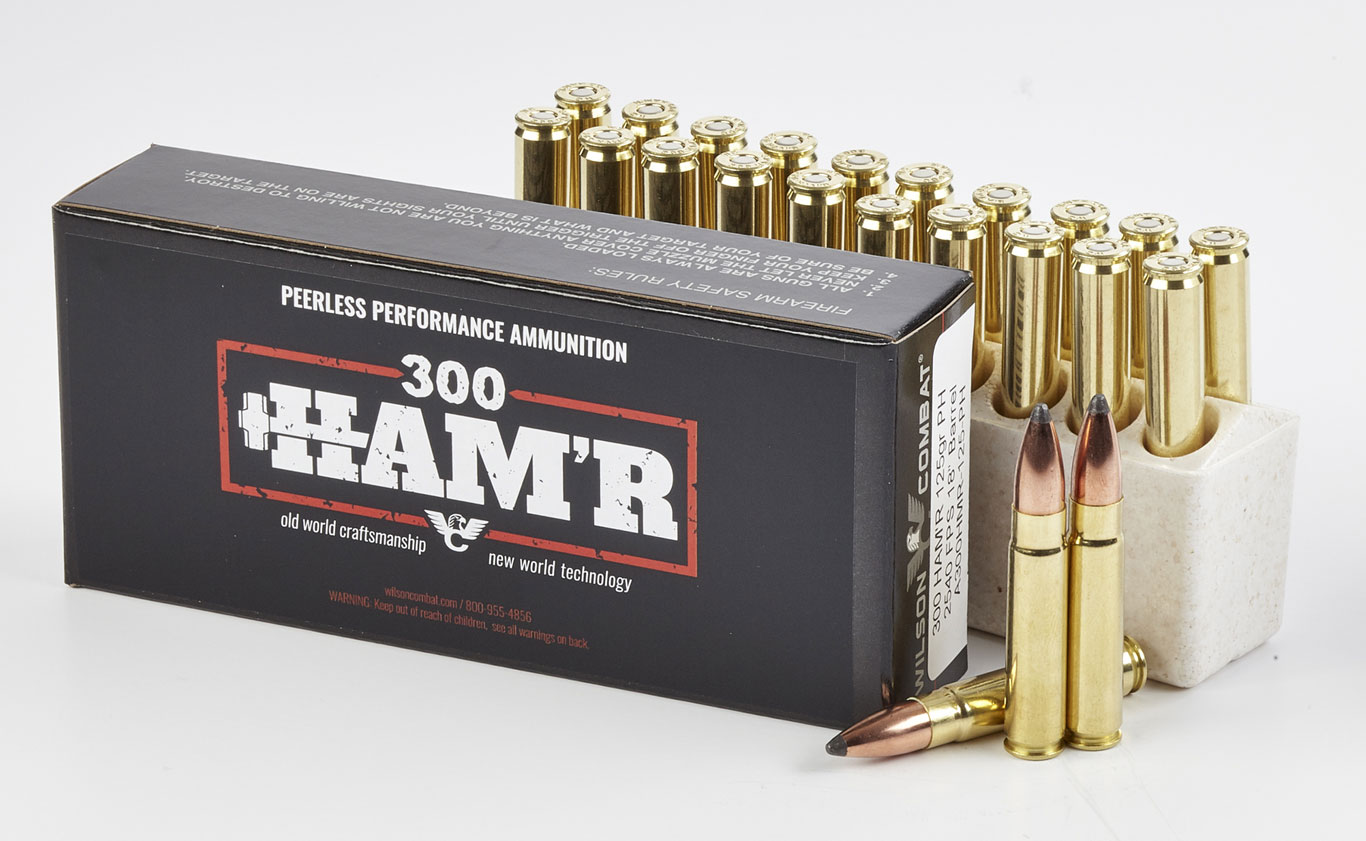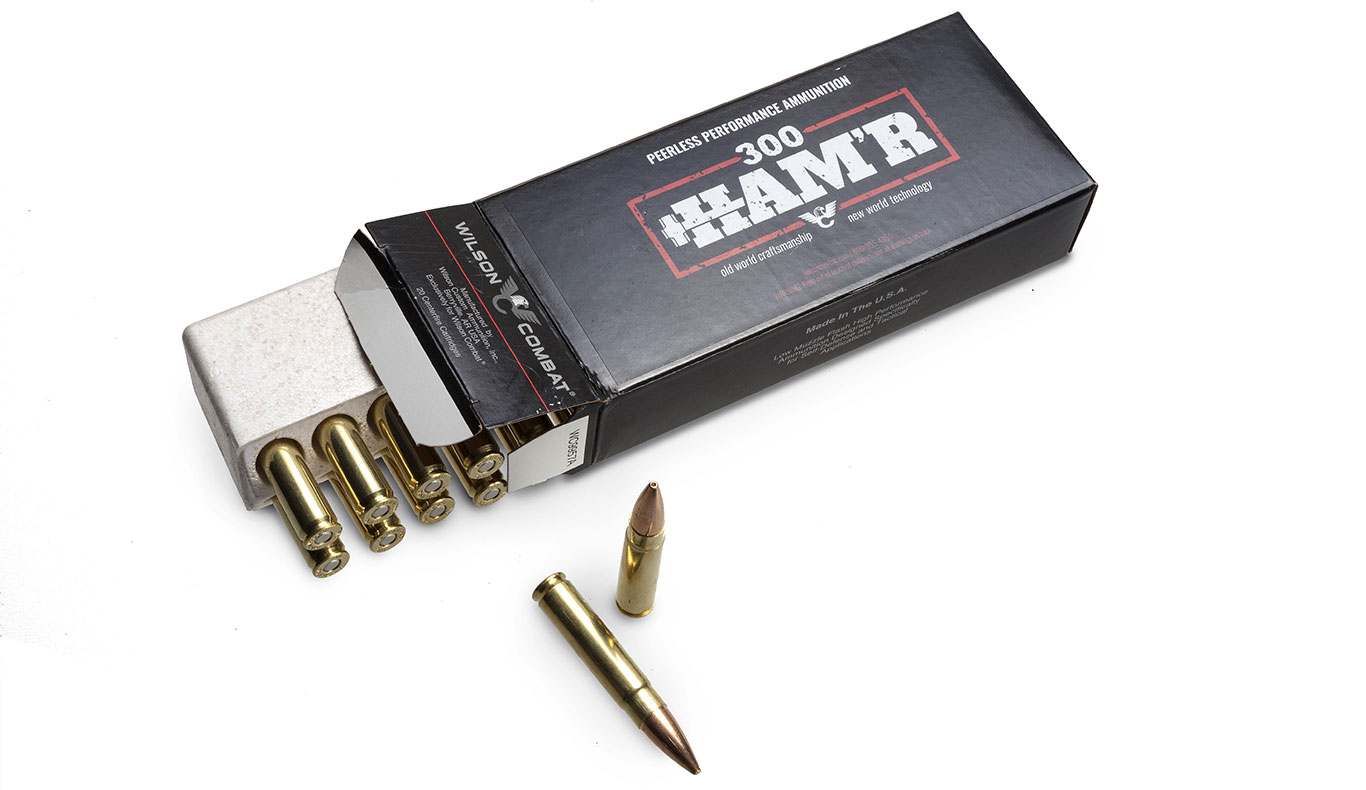
Wilson Combat’s new .300 HAM’R is to the .300 Blackout (BLK) what the .300 Win. Mag. is to the .308 Win.
Wilson Combat’s new .300 HAM’R is to the .300 Blackout (BLK) what the .300 Win. Mag. is to the .308 Win. All it takes is a barrel change.
There will no doubt be a fair degree of internet angst over this new .30-caliber AR-15 cartridge with the predictable refrains of “it’s just marketing” and “it doesn’t do anything my .300 BLK doesn’t do.” No, it isn’t and yes, it does (respectively).
Like many of you, I remain in love with the AR-15 but I was content with the rifles I already own. I was also skeptical of a new chambering in this still extremely popular, albeit slow-selling rifle, at least as of late. I already own rifles in 5.56x45mm, .300 BLK and 6.5 Grendel. I thought I was done.
The new .300 HAM’R offers a big step up in terminal performance over the .300 BLK by offering anywhere from 100 to 300 feet per second (fps) increase in velocity. That’s from factory-loaded offerings using the same bullet weights and same barrel lengths.
BILL’S JOURNEY

The .300 HAM’R case is .040-inch longer than the 7.62x40mm WT and .260-inch longer than the .300 BLK.
Bill Wilson lives on a plot of land that allows him to shoot and hunt freely. He loves the AR-15 and has been tinkering with a cartridge that maximized terminal performance from it using standard receivers, bolts and magazines.
The .300 BLK is a great little cartridge, but it was designed around heavy, subsonic bullets and the use of lighter 110- to 130-grain supersonic projectiles was an afterthought. Velocities for the .300 BLK with those bullet weights are anemic

